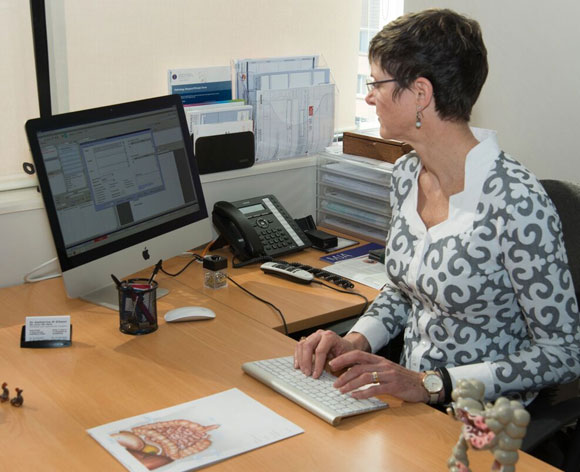What is a groin hernia?
A groin hernia is where some abdominal tissue (e.g. intestine or fat) pokes through a weak spot in the abdominal wall, causing a lump in the groin.
If you can push the lump back in, your hernia is reducible. If you can’t push it back, it’s non-reducible. A non-reducible hernia can be serious as the contents of the hernia may have their blood supply cut off.
Groin hernias include:
- inguinal hernias – where the tissue pokes through the inguinal canal (more common in men)
- femoral hernias – where the tissue pokes through the femoral canal (more common in women).
Groin hernias account for 9 out of 10 of all hernias. Men are 8 times more likely than women to develop a hernia.
Groin hernias can occur in people of all ages. Hernias in adults are usually acquired. That is the defect in the wall develops as a result of weakening or damage.
Most groin hernias are treated surgically.

What are the symptoms of a groin hernia?
The key symptom of a groin hernia is a small lump in the groin.
Sometimes the lump appears after a strain (e.g. lifting or coughing). Sometimes the lump just appears for no obvious reason.
Usually, you can push the lump back but find that it pops out after straining again. The lump tends to disappear when you lie down.
Over time, the defect in the abdominal wall can get bigger, which allows more abdominal tissue to poke through. In some men, the abdominal tissue can travel down into the scrotum.
Hernias are not usually painful. Although, many people feel an ache over a hernia, which worsens after doing any activity.
If you have a hernia and develop any of the following symptoms, you need to seek immediate treatment:
- sudden severe pain
- vomiting
- the hernia becomes firm or tender, or can’t be pushed back in (if it usually can)
- difficulty passing stools or wind.
These symptoms may mean:
- the blood supply to the tissue in the hernia has been cut off (strangulated hernia)
- a loop of bowel has gone into the hernia and become blocked (bowel obstruction).
These are medical emergencies.
What causes groin hernias?
The inguinal and femoral canals are natural ‘weak spots’ in the abdominal wall. These weak spots may be further weakened by straining, which increase the pressure inside the abdomen. Causes of straining include persistent coughing, lifting heavy loads and constipation.
Apart from straining, risk factors for developing a hernia include:
- older age
- being male
- being Caucasian
- pregnancy
- having an abdominal wall injury
- smoking
- having a hernia before or having a family history of hernia.
Sometimes hernias appear for no obvious reason.
How are groin hernias diagnosed?
Your GP or hernia specialist will usually be able to diagnose a hernia by examining you.
In some cases, an ultrasound might be done to confirm the diagnosis or see the extent of the problem.
How are groin hernias treated?
Not all hernias need to be treated right away. But, many do need to be repaired with surgery. Femoral hernias almost always need surgery, because they are more likely to cause strangulation or bowel obstruction.
Groin hernia specialists repair hernias in two different ways, open or laparoscopic surgery.
Open surgery
Here your specialist surgeon makes an incision near the hernia and gently pushes the bulging tissue back into place. Next, the weak tissue layer is sewn back together, so that nothing can bulge through. In most cases, a piece of mesh is placed to create a patch. This takes the strain off the tissue wall and prevents the hernia happening again.
Laparoscopic surgery
During this surgery, your specialist surgeon makes several small incisions. A tube with a camera is inserted through one and other tools to repair the hernia through the others. A mesh patch is also used with laparoscopic surgery.
Your groin hernia specialist will help you decide if surgery is right for you and which procedure is the best option.
